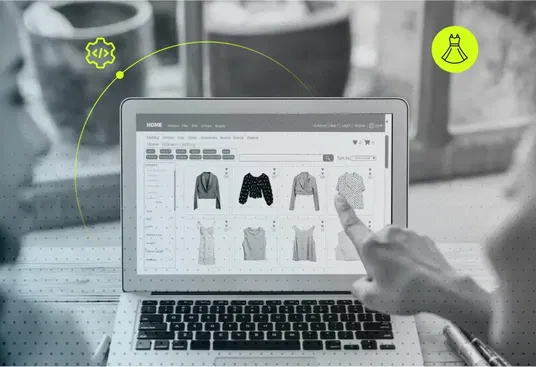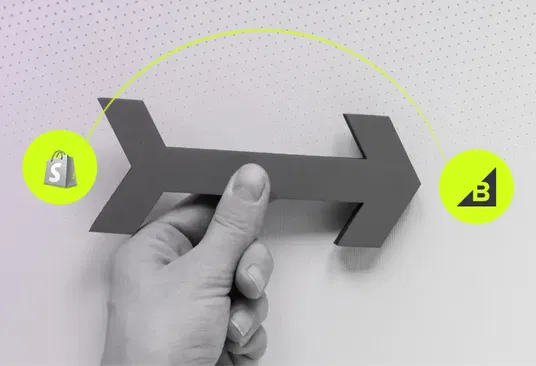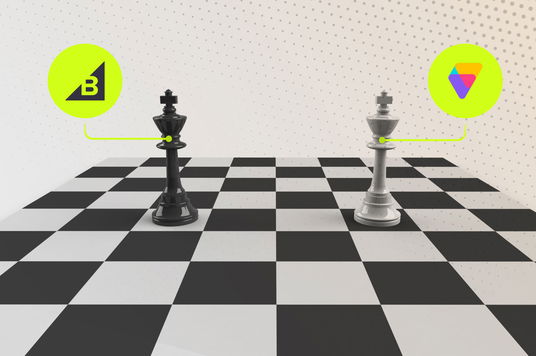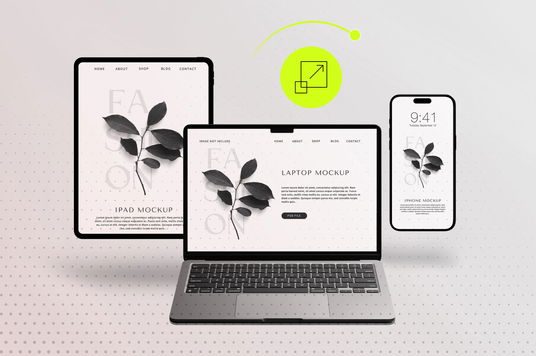How to Build a Successful Fashion eCommerce Store in 2025

- The Fashion eCommerce Landscape in 2025
- Choosing the Right Platform for Fashion Brands
- Mobile-First Design Strategy
- Essential AI and AR Features
- Conversion Optimization Tactics
- Performance and Speed Optimization
- Marketing and Social Integration
- Launch Strategy and Growth Planning
- Frequently Asked Questions
- Key Takeaways
The Fashion eCommerce Landscape in 2025
Building a successful fashion eCommerce store in 2025 requires more than just uploading product photos and setting up a checkout page. Today's fashion consumers expect personalized experiences, instant gratification, and seamless shopping journeys across all devices.
The fashion eCommerce industry has evolved dramatically, with mobile commerce accounting for over 70% of fashion purchases and AI-powered features becoming standard expectations rather than nice-to-have additions.
💡 Industry Insight: According to recent studies, fashion brands that implement comprehensive digital strategies see 25-40% higher conversion rates compared to those using basic eCommerce setups.
This comprehensive guide will walk you through every aspect of building a high-converting fashion store that not only launches successfully but scales with your business growth. Whether you're a startup fashion brand or an established retailer moving online, these strategies will help you create a competitive advantage in 2025.
"The most successful fashion eCommerce stores in 2025 aren't just selling products—they're creating immersive brand experiences that connect emotionally with customers while solving real shopping pain points."
— Fashion eCommerce Industry Report 2025
Choosing the Right Platform for Fashion Brands
Your platform choice will determine your store's capabilities, scalability, and long-term success. Fashion eCommerce platforms need to handle complex product catalogs, multiple variants, high-resolution images, and seasonal traffic spikes.
Top Platform Recommendations for Fashion Brands
| Platform | Best For | Key Strengths | Fashion-Specific Features |
|---|---|---|---|
| Shopify Plus | Growing fashion brands | Easy setup, extensive app ecosystem | Advanced variant handling, AR try-ons |
| BigCommerce | Complex catalogs | No transaction fees, built-in features | Unlimited variants, advanced filtering |
| Adobe Commerce | Enterprise fashion brands | Ultimate customization, B2B capabilities | Multi-store management, advanced B2B |
| Headless Solutions | Premium brands | Ultimate performance, flexibility | Custom experiences, omnichannel |
🎯 Platform Selection Tip: Consider your current needs AND 3-year growth projections. A platform that works for 100 products might not scale to 10,000 products with multiple variants. Our fashion eCommerce development team can help you choose the right platform based on your specific requirements.
Key Platform Requirements for Fashion Stores
- Unlimited Product Variants: Handle size, color, material combinations
- Advanced Image Management: Multiple angles, zoom, 360° views
- Inventory Management: Real-time stock tracking across variants
- Mobile Optimization: Native mobile commerce capabilities
- SEO Features: Built-in optimization for fashion-specific searches
- Integration Capabilities: Connect with fashion-specific tools and services
Mobile-First Design Strategy
With mobile commerce dominating fashion purchases, your design strategy must prioritize mobile experiences while ensuring desktop functionality remains excellent.
Essential Mobile Design Elements
Traditional Approach
- Desktop-first design
- Small product images
- Complex navigation menus
- Multiple checkout steps
- Limited filtering options
2025 Mobile-First Approach
- Touch-optimized interface
- Full-screen product galleries
- Intuitive swipe navigation
- One-click checkout options
- Smart filtering with visual cues
Critical Mobile UX Features
- Thumb-Friendly Navigation: Place key actions within easy thumb reach on mobile screens
- Progressive Image Loading: Load high-quality images progressively to maintain speed
- Gesture-Based Interactions: Implement swipe, pinch-to-zoom, and pull-to-refresh
- Simplified Checkout: Reduce checkout to 2-3 steps maximum
- Quick Product Views: Enable quick product previews without leaving category pages
📱 Mobile Performance Tip: Fashion stores should load in under 2 seconds on mobile. Every additional second of load time can reduce conversions by up to 20%. Our fashion eCommerce optimization services focus heavily on mobile performance.
Essential AI and AR Features
AI and AR technologies are no longer optional for fashion eCommerce success. These features directly address the biggest challenges in online fashion retail: sizing uncertainty, style matching, and product discovery.
Must-Have AI Features for Fashion Stores
1. AI-Powered Visual Search
Allow customers to upload photos and find similar items in your catalog. This feature is particularly powerful for fashion, where customers often see styles they like but struggle to describe them in words.
- Image-based product discovery
- Style similarity matching
- Color and pattern recognition
- Cross-category recommendations
2. Natural Language Processing for Search
Enable customers to search using natural phrases like "summer wedding guest dress" or "business casual for women" instead of specific product names.
3. Personalized Product Recommendations
Use browsing behavior, purchase history, and style preferences to show relevant products at the right moments in the shopping journey.
🤖 AI Implementation: Start with one AI feature and expand gradually. Visual search typically provides the highest ROI for fashion brands, with 30-50% improvement in product discovery rates.
AR Features That Drive Conversions
Virtual Try-On Technology
Reduce return rates and increase confidence with AR try-on features:
- Virtual fitting for clothing items
- Accessory visualization (jewelry, bags, shoes)
- Size recommendation based on body measurements
- Style mixing and matching
Interactive Lookbooks
Create immersive shopping experiences with AR-enhanced lookbooks that allow customers to:
- See complete outfits in 3D
- Mix and match different pieces
- Purchase entire looks with one click
- Share styled looks on social media
"Fashion brands implementing AR try-on features see up to 40% reduction in return rates and 25% increase in average order value."
— AR Commerce Research 2025
Conversion Optimization Tactics
Fashion eCommerce conversion optimization goes beyond basic CRO principles. You need to address fashion-specific concerns like fit uncertainty, style confidence, and social proof.
Fashion-Specific Conversion Strategies
1. Comprehensive Size Guides and Fit Technology
Size-related returns are the biggest challenge in fashion eCommerce. Address this with:
- Interactive size charts with body measurements
- Fit prediction based on previous purchases
- Customer review insights about sizing
- Virtual fitting room integration
2. Social Proof and User-Generated Content
Fashion is inherently social. Leverage this with:
- Customer photos wearing your products
- Style inspiration galleries
- Influencer collaborations and features
- Real-time social media integration
3. Complete-the-Look Features
Increase average order value by suggesting complementary items:
- Automated outfit completion
- Styling suggestions based on occasions
- Bundle discounts for complete looks
- Cross-category recommendations
💰 Conversion Tip: Fashion brands using complete-the-look features see 35-50% higher average order values. The key is making suggestions feel natural and helpful, not pushy.
Checkout Optimization for Fashion
- Guest Checkout Option: Allow purchases without account creation
- Multiple Payment Methods: Include buy-now-pay-later options popular with fashion shoppers
- Clear Return Policy: Display return information prominently during checkout
- Shipping Options: Offer express shipping for fashion-forward customers
- Order Summary: Show product images in checkout to confirm style choices
Performance and Speed Optimization
Fashion websites are image-heavy by nature, making performance optimization crucial for success. Slow-loading fashion sites lose customers quickly, especially on mobile devices.
Image Optimization Strategies
Advanced Image Techniques
- WebP Format: Use next-gen image formats for 25-35% smaller file sizes
- Lazy Loading: Load images as users scroll to improve initial page speed
- Responsive Images: Serve appropriate image sizes for different devices
- Image CDN: Use content delivery networks for global image optimization
Progressive Loading Strategy
Implement a tiered loading approach:
- Critical Content First: Load product names, prices, and basic info immediately
- Hero Images: Load main product images with high priority
- Secondary Images: Load additional angles and detail shots as needed
- Enhancement Features: Load zoom, 360° views, and AR features last
⚡ Performance Benchmark: Fashion eCommerce sites should achieve Core Web Vitals scores of: LCP under 2.5s, FID under 100ms, CLS under 0.1. Our performance optimization services focus specifically on fashion site requirements.
Technical Performance Optimizations
Caching Strategies
- Browser caching for static assets
- CDN caching for global performance
- Database query optimization
- API response caching
Code Optimization
- Minify CSS and JavaScript
- Remove unused code and plugins
- Optimize database queries
- Implement efficient search algorithms
Marketing and Social Integration
Fashion brands thrive on social media and influencer marketing. Your eCommerce store should seamlessly integrate with your marketing efforts across all channels.
Social Commerce Integration
Instagram and TikTok Shopping
Enable direct purchasing from social media platforms:
- Instagram Shop integration
- TikTok Shopping features
- Pinterest Product Rich Pins
- Facebook Shop synchronization
User-Generated Content Strategy
Encourage and showcase customer content:
- Hashtag campaigns for customer photos
- Review incentive programs
- Style challenge contests
- Customer spotlight features
Email Marketing Integration
Fashion-Specific Email Campaigns
- Seasonal Collections: Automated campaigns for new arrivals
- Style Recommendations: Personalized outfit suggestions
- Restock Notifications: Alert customers when sold-out items return
- Occasion-Based Marketing: Holiday, wedding, vacation outfit suggestions
📧 Email Performance: Fashion brands see 25-30% higher email engagement rates when using personalized style recommendations compared to generic promotional emails.
Launch Strategy and Growth Planning
A successful fashion eCommerce launch requires careful planning, testing, and gradual scaling. Rushing to market without proper preparation often leads to poor first impressions and lost customers.
Pre-Launch Checklist
- Technical Testing: Comprehensive testing across devices, browsers, and connection speeds
- Content Preparation: High-quality product photos, descriptions, and SEO optimization
- Inventory Setup: Accurate stock levels and variant management
- Payment Processing: Test all payment methods and fraud protection
- Shipping Integration: Configure shipping rates, zones, and carrier integrations
- Analytics Setup: Install tracking for conversions, user behavior, and performance
- Customer Service: Prepare support systems and return processes
Soft Launch Strategy
Consider a phased launch approach:
Phase 1: Friends & Family
- Limited product catalog
- Close network testing
- Feedback collection
- Bug identification
Phase 2: Public Launch
- Full product catalog
- Marketing campaign activation
- Social media promotion
- Influencer partnerships
Growth Planning and Scaling
Plan for growth from day one to avoid costly rebuilds later:
Technical Scalability
- Choose hosting that can handle traffic spikes
- Implement auto-scaling infrastructure
- Plan for international expansion
- Design flexible product catalog structure
Business Scalability
- Establish vendor and supplier relationships
- Plan inventory management systems
- Develop customer service processes
- Create content creation workflows
🚀 Growth Tip: Fashion brands that plan for 10x growth from launch are 3x more likely to achieve sustainable scaling without major platform migrations. Our fashion eCommerce development services include growth planning and scalability consulting.
Frequently Asked Questions
1. How long does it take to build a fashion eCommerce store?
A professional fashion eCommerce store typically takes 8-16 weeks to build, depending on complexity, custom features, and integrations. Simple stores can launch in 6-8 weeks, while complex stores with AI features, custom design, and multiple integrations may take 12-20 weeks.
2. What's the average cost to build a fashion eCommerce store?
Costs vary significantly based on features and complexity. Basic fashion stores start around $15,000-$30,000, while advanced stores with AI features, custom design, and integrations range from $50,000-$150,000+. The investment typically pays for itself through improved conversions and reduced operational costs.
3. Which platform is best for fashion eCommerce?
The best platform depends on your specific needs. Shopify Plus is excellent for growing brands, BigCommerce handles complex catalogs well, and Adobe Commerce is ideal for enterprise brands. Headless solutions offer ultimate flexibility for premium brands with unique requirements.
4. How important are AI features for fashion stores?
AI features are becoming essential for competitive fashion eCommerce. Visual search, personalized recommendations, and size prediction directly address major fashion shopping pain points and can improve conversions by 25-40%. Start with one AI feature and expand based on customer response.
5. What's the biggest challenge in fashion eCommerce?
The biggest challenge is high return rates due to sizing and style mismatches. This can be addressed through virtual try-on technology, comprehensive size guides, detailed product information, and customer reviews with photos. Proper implementation can reduce return rates by 30-50%.
6. How do I optimize my fashion store for mobile?
Mobile optimization for fashion requires touch-friendly navigation, fast image loading, simplified checkout, and thumb-friendly design. Since 70%+ of fashion purchases happen on mobile, this should be your primary design focus. Performance is critical—aim for under 2-second load times.
7. Should I integrate social media with my fashion store?
Absolutely. Fashion is inherently social, and social commerce integration is essential. Enable Instagram Shopping, TikTok Shopping, and user-generated content features. Fashion brands with strong social integration see 40-60% higher engagement and conversion rates.
8. How do I handle seasonal traffic spikes?
Plan for seasonal spikes with auto-scaling hosting, CDN implementation, and performance optimization. Fashion brands often see 300-500% traffic increases during sales periods. Your infrastructure should handle these spikes without performance degradation or downtime.
Key Takeaways
Building a successful fashion eCommerce store in 2025 requires a strategic approach that combines the right technology, design principles, and business planning. The fashion industry's unique challenges—from high return rates to seasonal demand—require specialized solutions.
Here's what to remember:
- Platform Choice Matters: Select a platform that can handle fashion-specific requirements and scale with your growth
- Mobile-First is Essential: Design for mobile users first, as they represent the majority of fashion shoppers
- AI and AR Drive Results: These technologies directly address fashion shopping pain points and improve conversions
- Performance is Critical: Fast-loading stores convert better, especially for image-heavy fashion sites
- Social Integration is Key: Fashion thrives on social proof and user-generated content
- Plan for Growth: Build scalable solutions that can handle your success
The fashion eCommerce landscape is competitive, but brands that implement these strategies create significant advantages. Success comes from understanding your customers' needs and building experiences that solve their problems while showcasing your products beautifully.
"The most successful fashion eCommerce stores don't just sell clothes—they create experiences that help customers discover their style, feel confident in their choices, and become brand advocates."
— 1Center Fashion eCommerce Team
Ready to Build Your Fashion eCommerce Success Story?
Our team specializes in creating high-converting fashion eCommerce stores that combine beautiful design with powerful functionality. From platform selection to AI integration, we handle every aspect of your fashion store development.
Get Your Free Fashion eCommerce Consultation →
Or explore our comprehensive fashion eCommerce development services to see how we can help your brand succeed online.
About 1Center
1Center is a leading eCommerce development agency specializing in fashion and apparel brands. Our team of certified developers, designers, and strategists has delivered successful fashion eCommerce projects across platforms including Shopify Plus, BigCommerce, Adobe Commerce, and headless solutions. We combine deep technical expertise with fashion industry knowledge to create stores that convert visitors into customers and customers into brand advocates.
Written byPublished June 03, 2025
1Center


